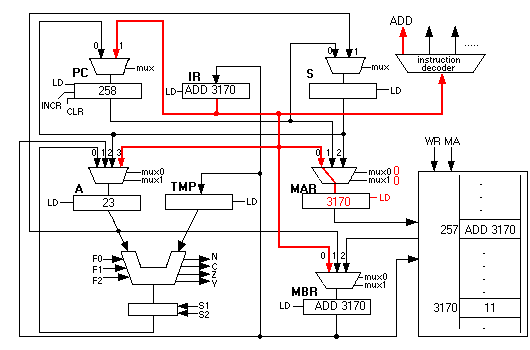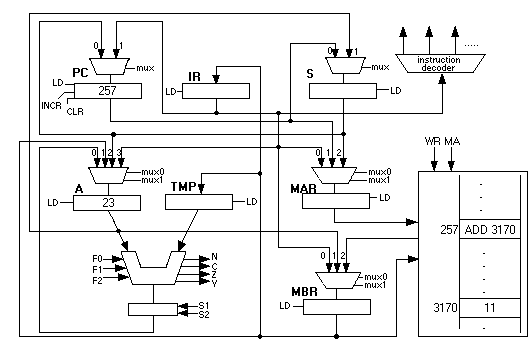
Let us go through one complete ADD instruction in tedious detail so we can see how the control points are set during the stages of the instruction cycle. Some of the extraneous lines have been omitted from the block diagrams to make the picture clearer.

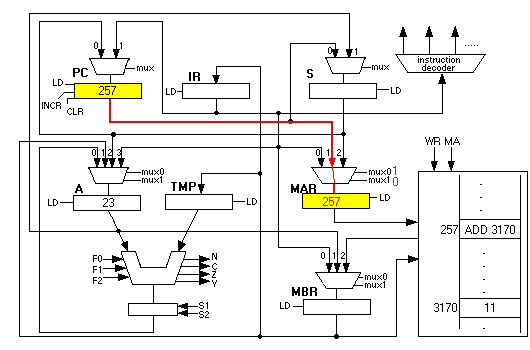
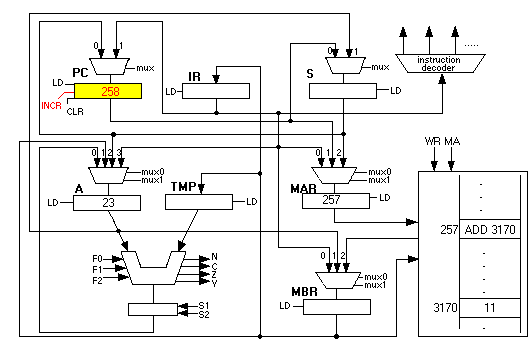
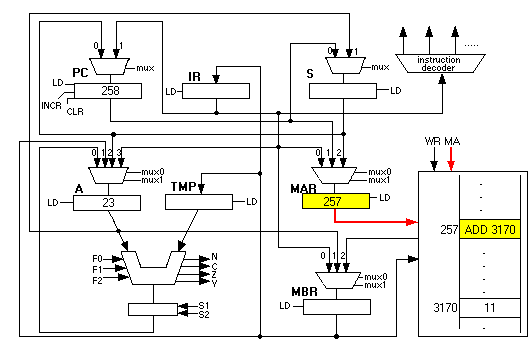
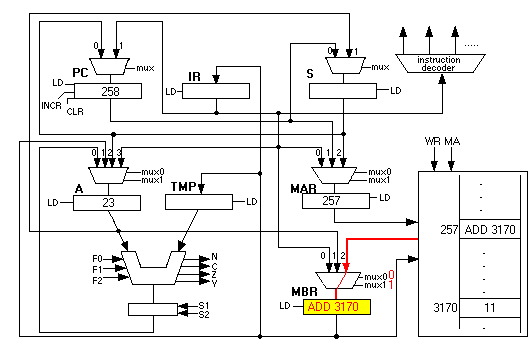
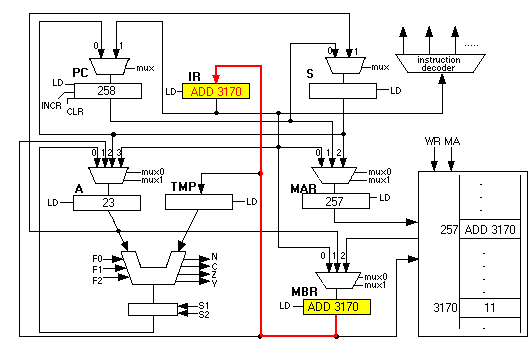


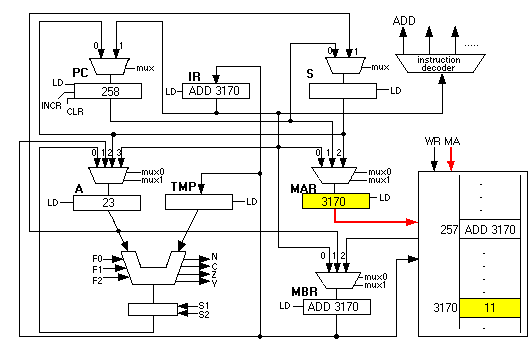
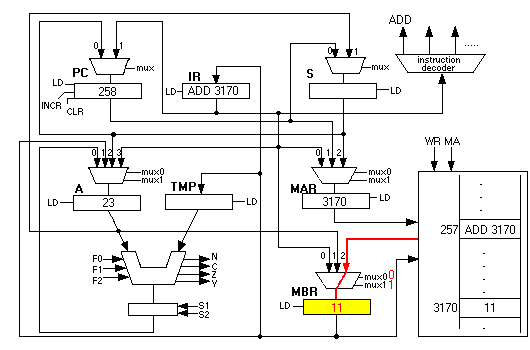
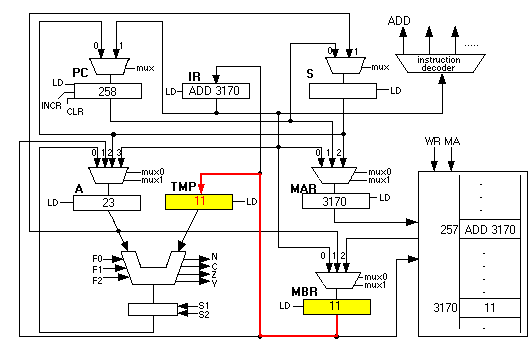
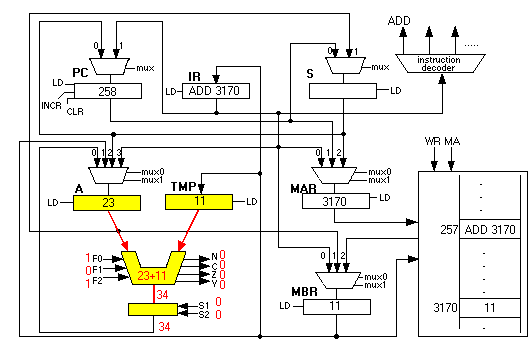
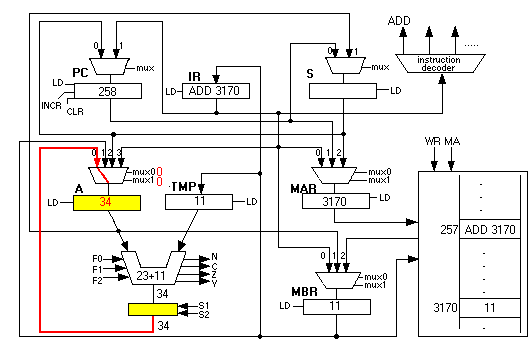
Now the computer is ready to begin the next instruction, which will be at location 258 (not shown in the pictures.)
Click here to see an animation of this entire cycle.
If the frames go by too fast, just wait because the animated GIF cycles back to the beginning again and again, until you click on the back button.
Different instructions cause different pathways to be chosen. For example, STD causes the value in A to be copied into MBR and then a memory write operation is activated. A doesn't get changed in the process, but some word of memory gets overwritten with A's value.
The control unit uses the current instruction to activate a sequence of pathways to get the proper job done. If the ADD wire is high, the sequence shown above is always done. If the STD wire is high instead, a different sequence is done. The first couple of steps, up through the instruction fetch stage and incrementing of the PC, are always done by every instruction, even HLT and NOP. From that point, differences occur depending upon which instruction is being performed.
A tiny but important point needs to be cleared up, especially since the above diagrams are a bit confusing. The output of a register is copied onto the wires that emanate from that register and the signals almost immediately travel to their destinations, which are usually muxes or other registers. However, these values are not latched into the registers until the LD wire goes high. Moreover, when there are several inputs to a mux, only one is selected by the associated mux select wires.
The above pictures only show in red those pathways that are of interest to us. Below is one of diagrams shown as it "really is." The output of the IR register is about to be copied into the MAR. Notice that every wire that emanates from IR is colored red and thickened a bit. These wires go into the PC's mux, A's mux, the MAR's mux, the MBR's mux and the instruction decoder. However, PC is not changed because PC-LD is not high. Neither are A or MBR changed because their LD wires are 0. Only MAR is changed. The instruction decoder is always "reading" the top 8 bits of IR and setting the appropriate instruction wire high, ADD in this case. But as long as IR's value doesn't change, it doesn't hurt anything for this decoding to happen continuously.
It is important to be aware of the way things "really are," even though we ignore some of the details in order to focus on the important aspects of the instructions' actions.
